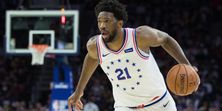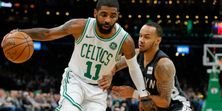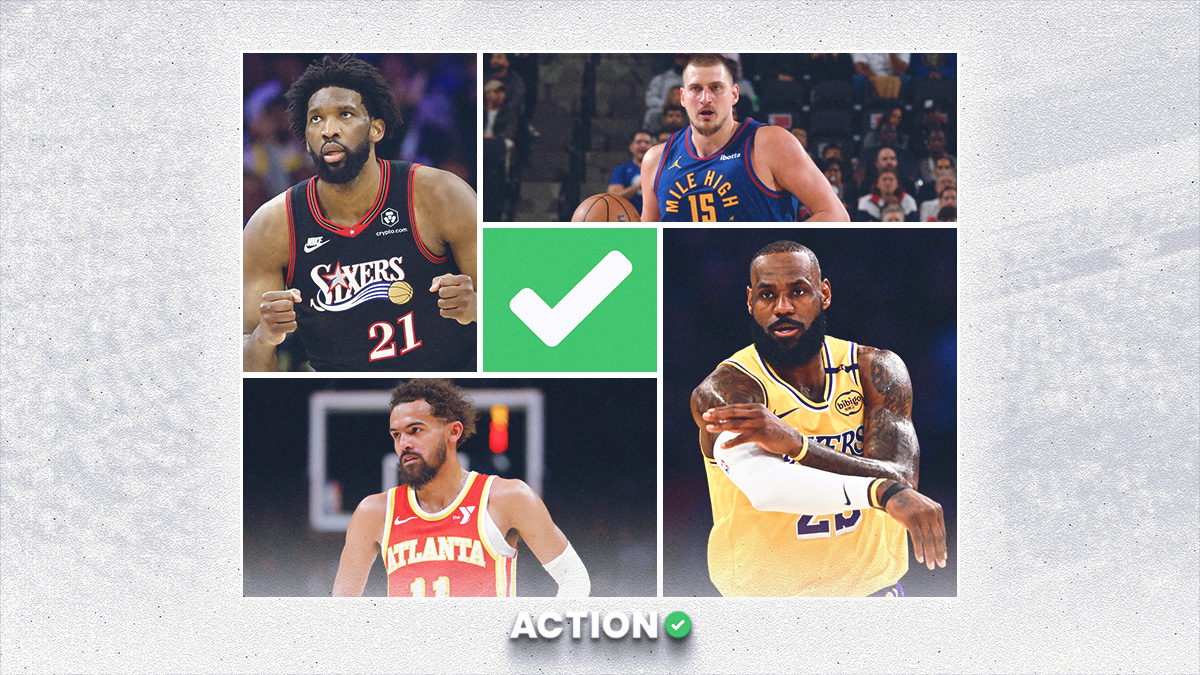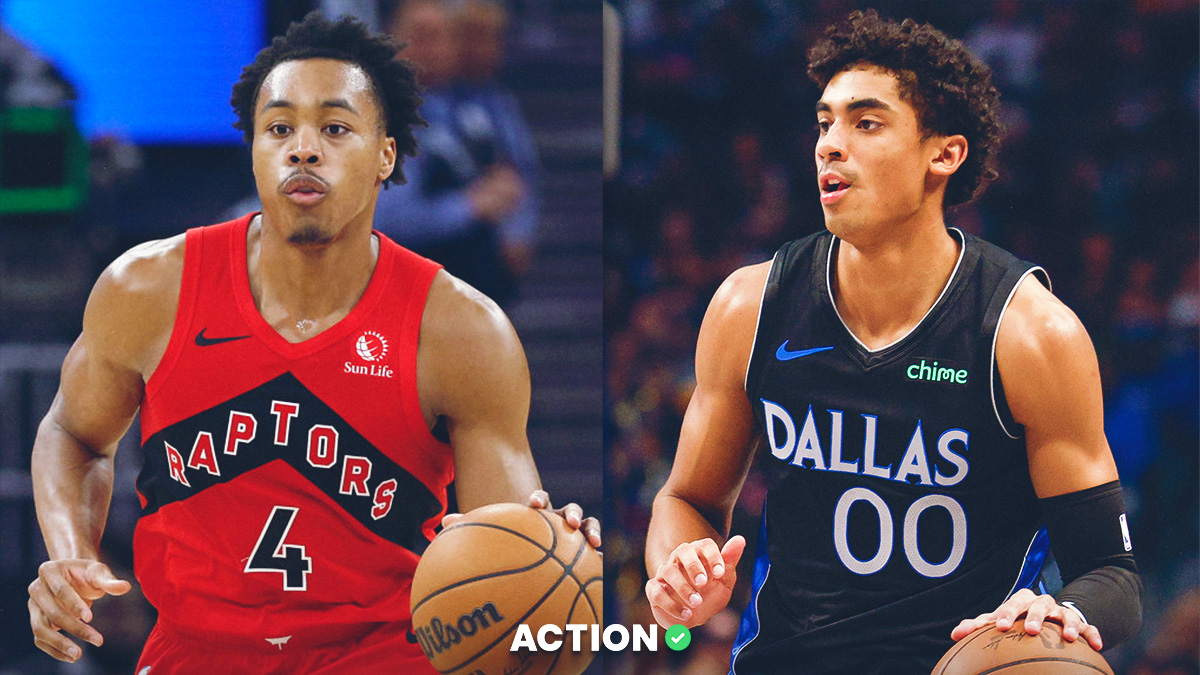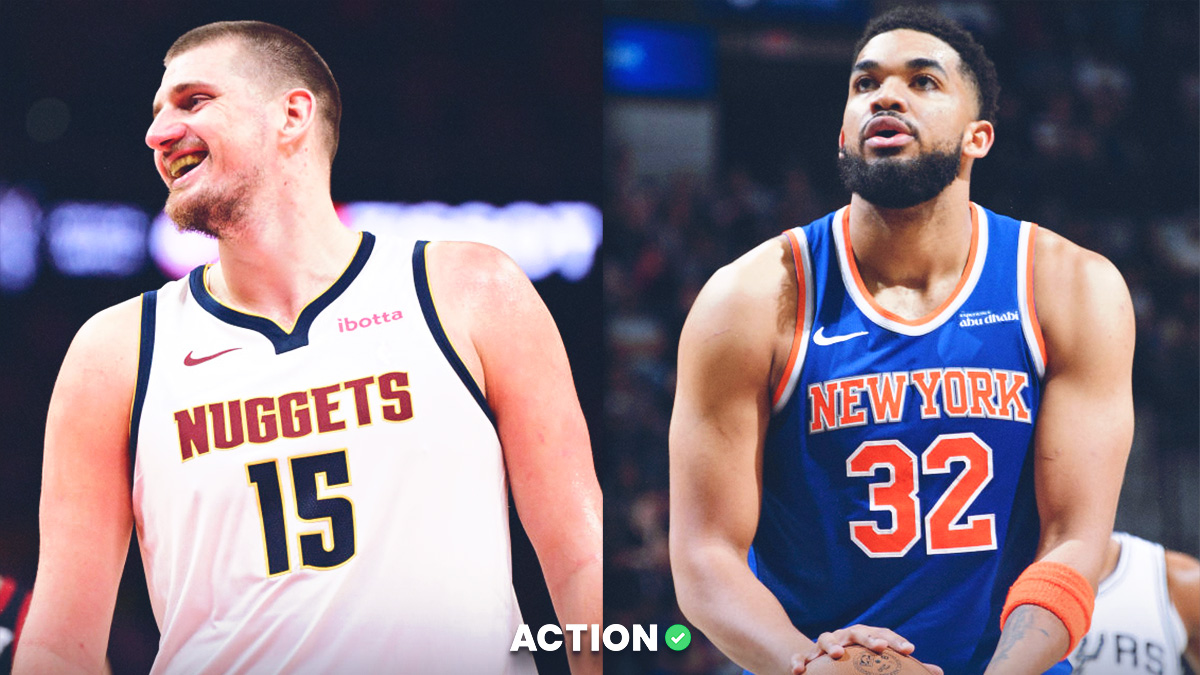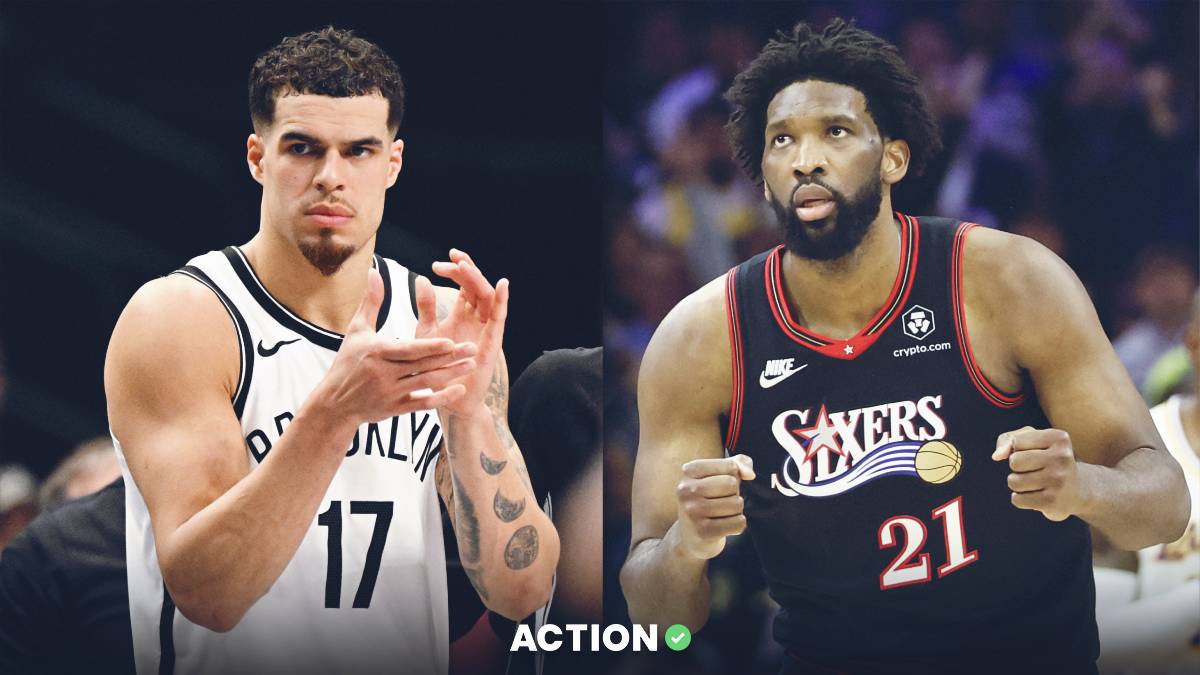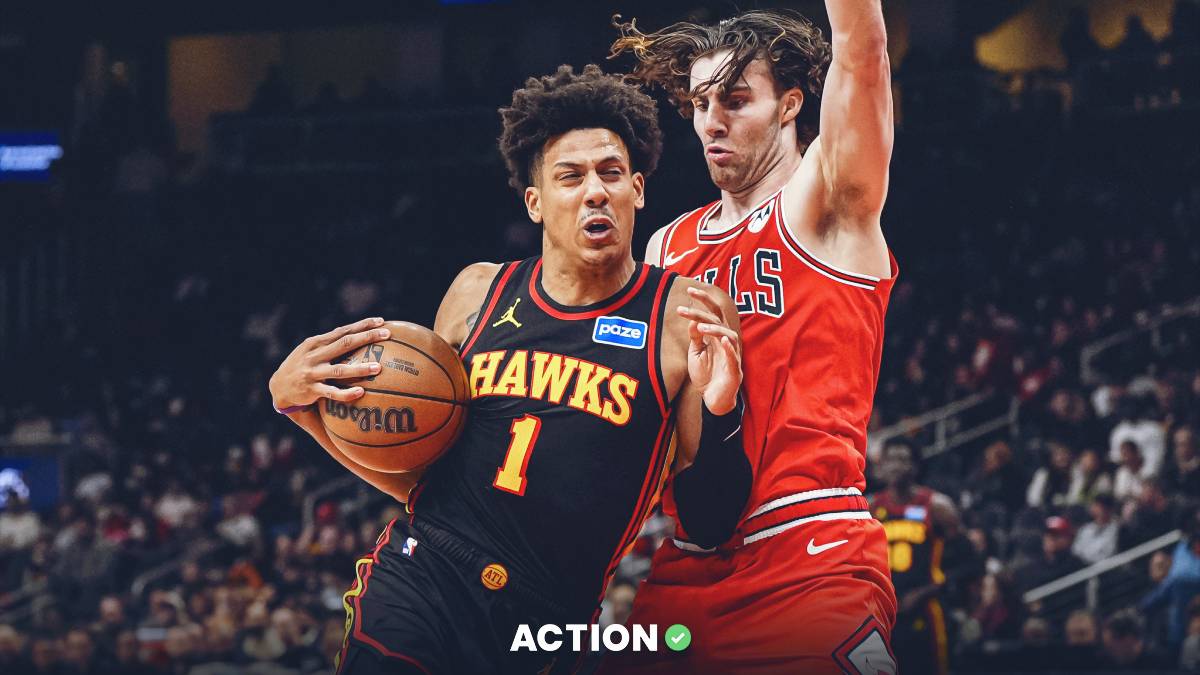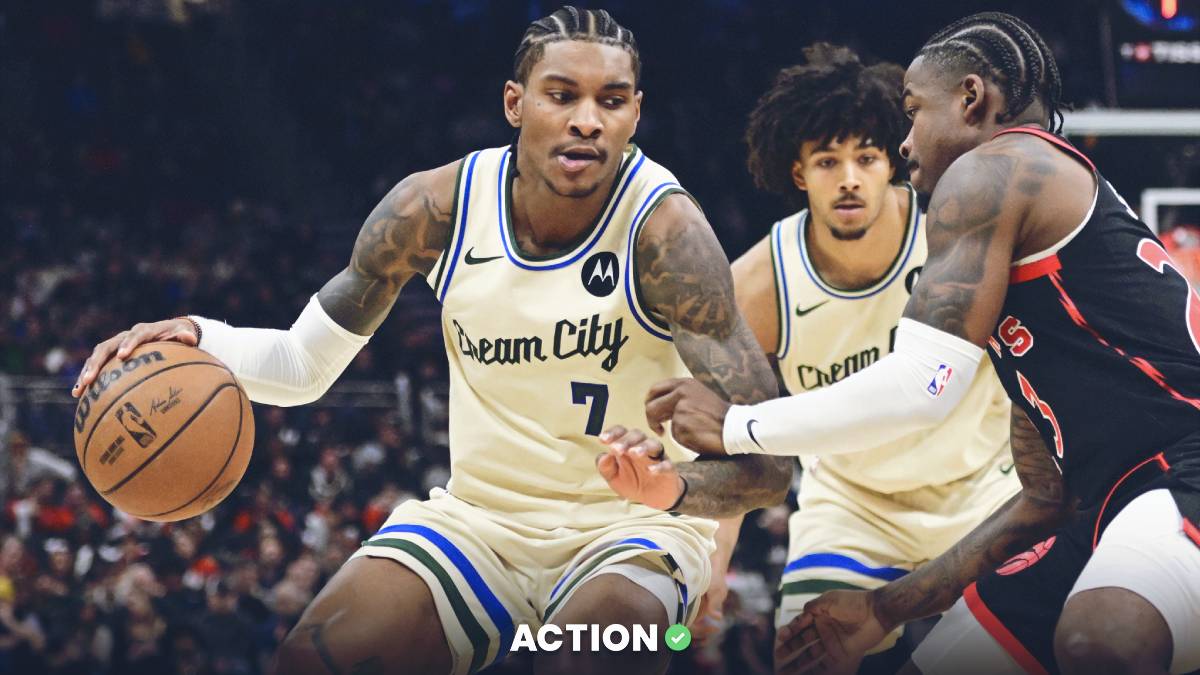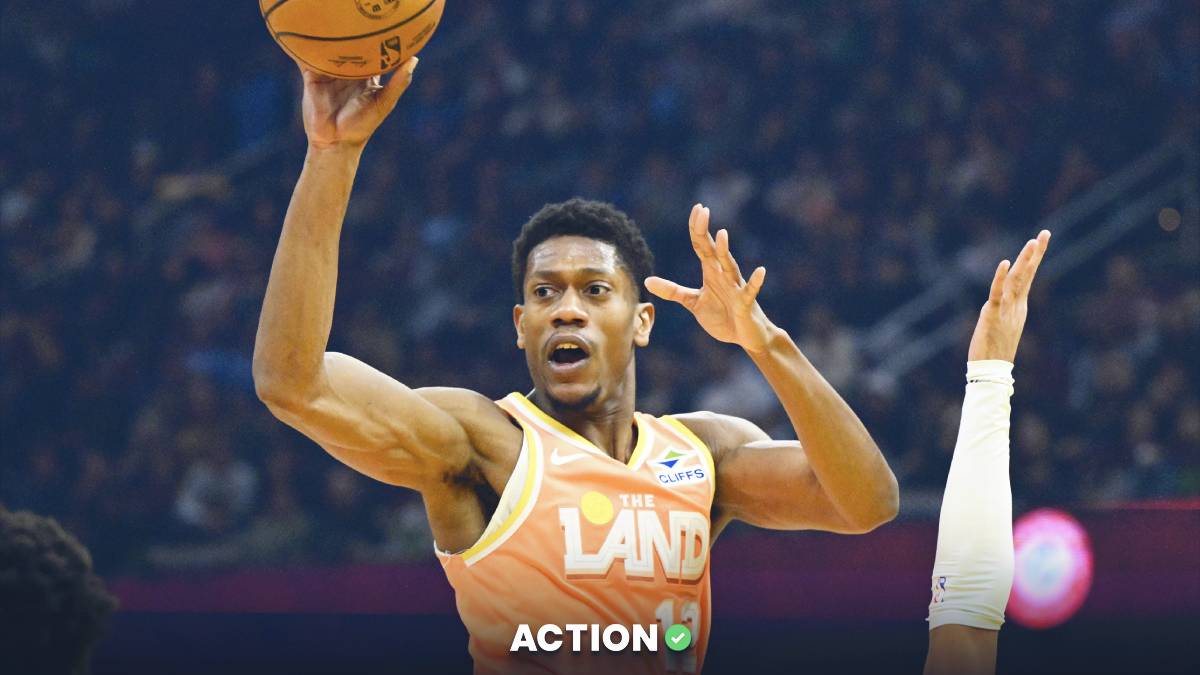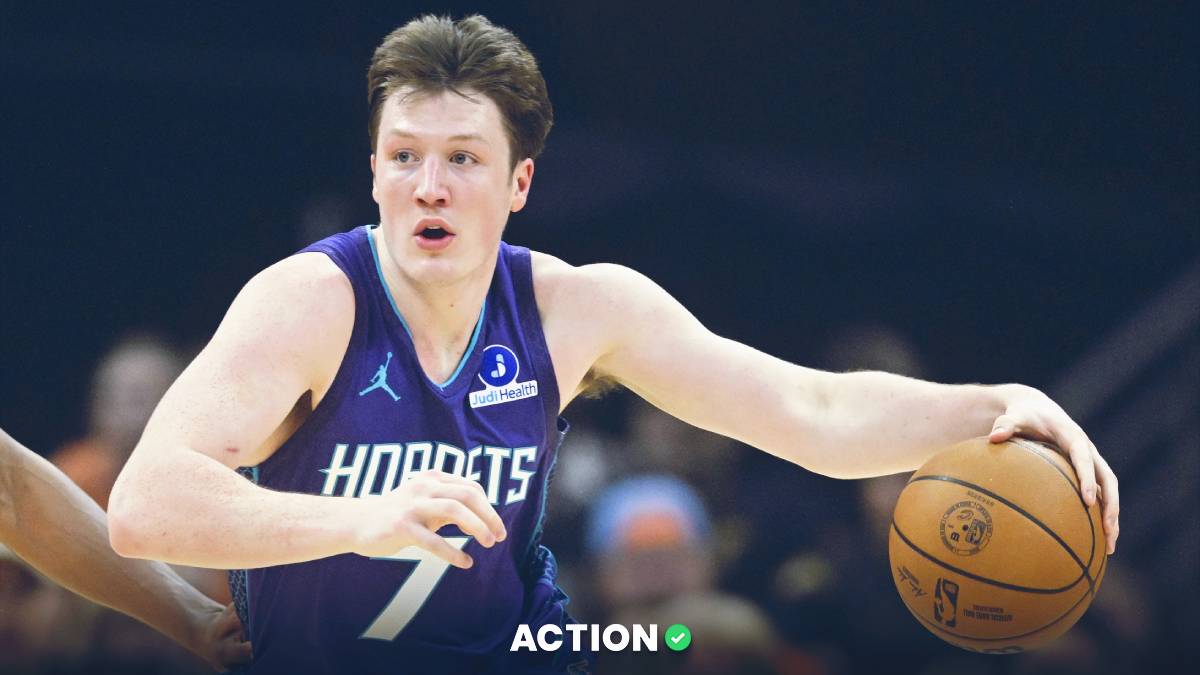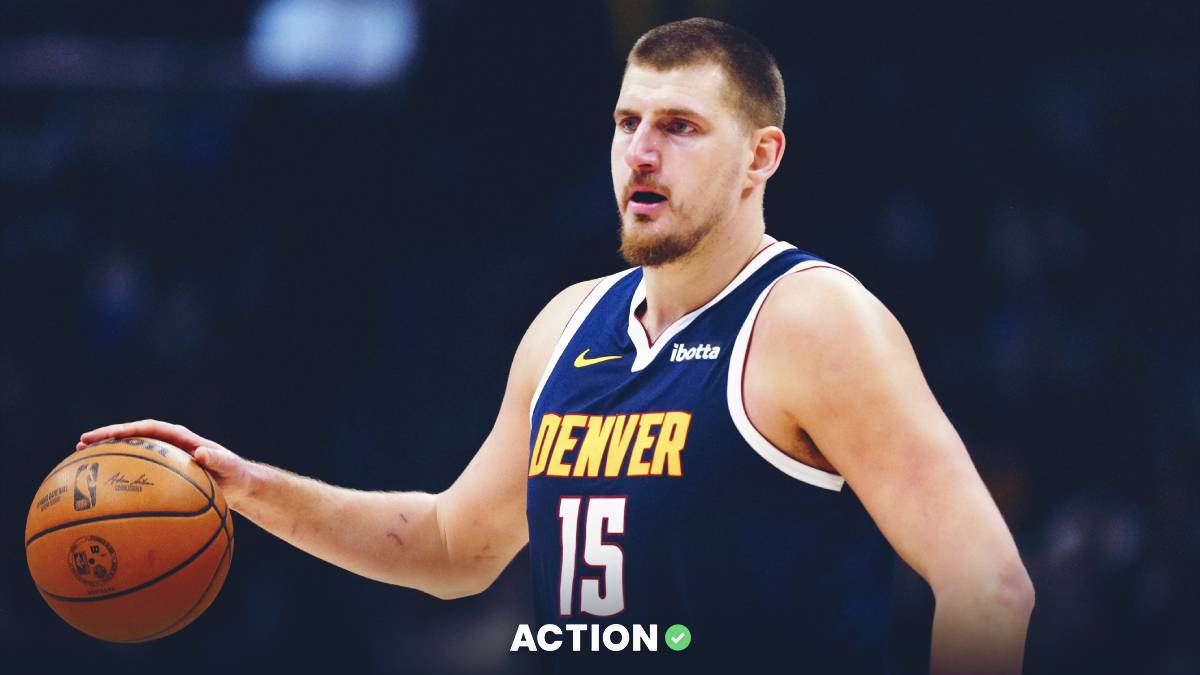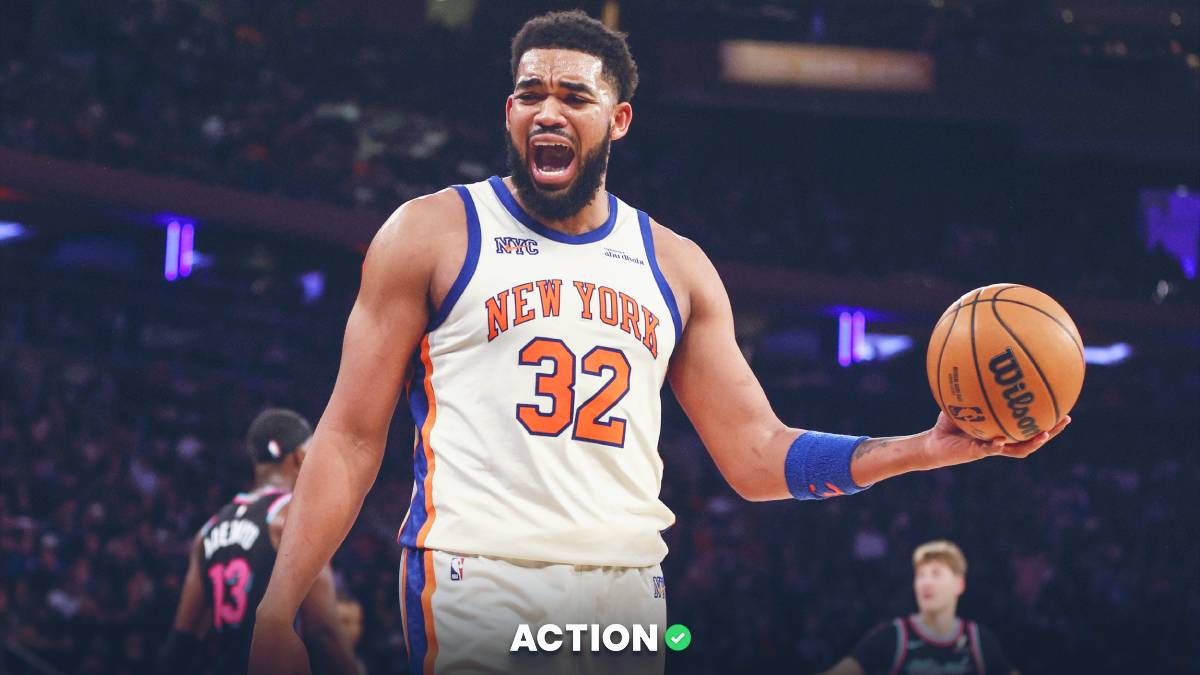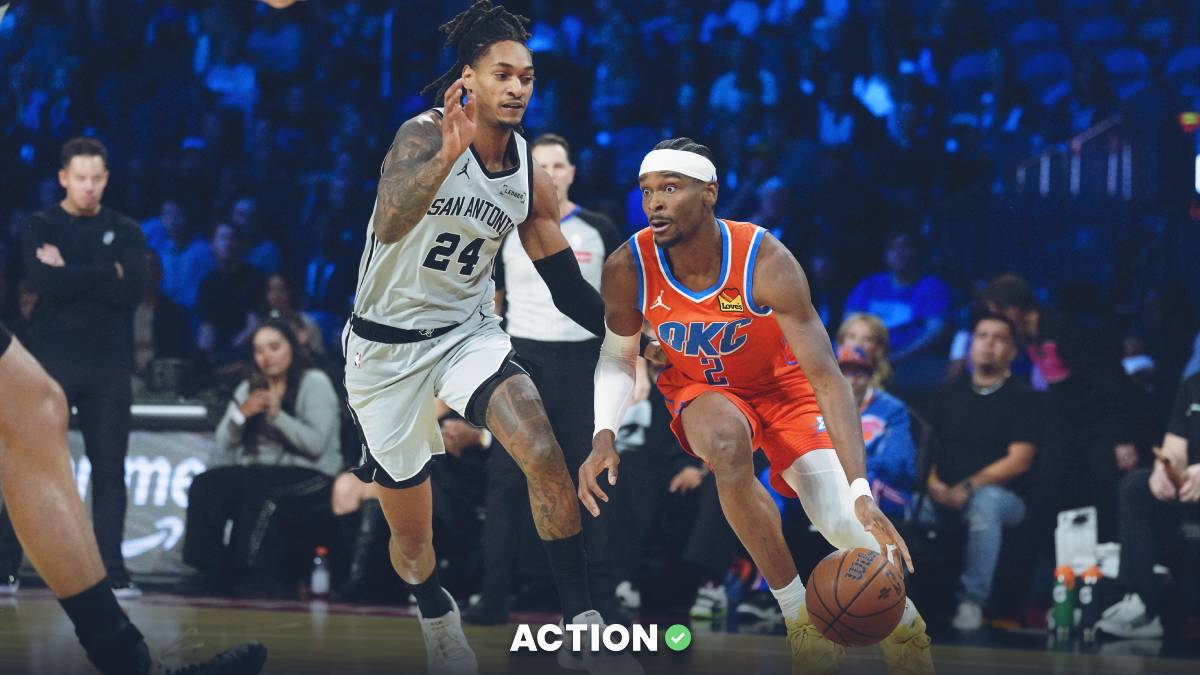- Matt Moore (@HPBasketball) looks at some of the best superstar duos in NBA history and what their relationships might mean for this year's title chase.
Go with me here.
With the Los Angeles Clippers the new consensus title favorites, and with an expansive list of superstar duos instead of trios in the league, I wanted to get a sense for how superstar duos had done throughout NBA history. But instead of working from the duos forward, I took the opposite approach and focused on the teams first.
I took a look at the best teams in NBA regular season history according to Basketball Reference's SRS, a metric that evaluates point differential vs. strength of schedule. It cuts through some of the smoke and mirrors of the NBA regular season.
It's a pretty short pathway to "which were the best teams?"
And when you look at the top-20 teams on that list through the prism of how they were constructed with their star talent, a pattern emerges.
There's the best player — a top-level MVP candidate star — and a secondary player often capable of MVP-caliber play in his own right but who is willing to sacrifice the top level to win. The third man is always a role player, who typically does all the dirty work while being competent offensively.
It's extremely easy to slip into describing this dynamic as the alpha and beta, but those words have been largely corrupted by toxic forces on the world wide web. So we're going to use President and Vice President, only not in the political sense, because of, well, many reasons. Think of it as president of a company. He makes the most money, he gets the most decision-making power. (The CEO's the coach or something. It's not a perfect analogy, nothing is, work with me here.)
A fuzzy pattern emerged when looking at the players on these teams. Catch-all statistics are always going to be wonky and problematic; everything has to have context. But with a few very clear exceptions, one thing that helped identify Presidents and Vice Presidents was the Basketball Reference metric Win Shares. You'd often see only two players with Win Shares over 10, and it would help identify which two players contributed the most on the floor on both ends.
Again, there are issues with Win Shares, and this provided more of a lighthouse than proof of concept. Let's look at those teams. Here's the top 20:
1971 and 1972 Milwaukee Bucks
Won NBA title in 1971
Kareem Abdul-Jabbar before he made the now cliché leap to the Lakers as President and that year's MVP. Oscar Robertson as Vice President averaging 8.3 assists.
1991, 1992, 1996 and 1997 Chicago Bulls
Won four of the total six NBA titles
Not that you need this explained, but Michael Jordan as President and Scottie Pippen as Vice President. There will always be a discussion of Dennis Rodman as the third part of a trifecta, but that does a disservice to Horace Grant and his contributions in the first three-peat. What it does touch on is the importance of that defensive forward who does the dirty work.
1972 Los Angeles Lakers
Won NBA title
Wilt Chamberlain is the obvious candidate for President, having been, you know, Wilt Chamberlain and winning Finals MVP that season. Chamberlain averaged only 14 points per game in the regular season, but he was still Wilt. You get prime Jerry West for Vice President. As for Gail Goodrich, first in points per game and third in Win Shares? We'll get to him in a minute.
2015, 2016 and 2017 Golden State Warriors
Won two NBA titles, three total between 2015-2018
There are two models here: 2015 and 2016 when the Warriors had Stephen Curry as the President. The question then is whether Draymond Green or Klay Thompson was the Vice. The best answer is probably that they both filled in that role, on defense and offense respectively, but I lean slightly towards Green as not only the defensive pendulum but also the team's best passer.
When Kevin Durant joined in 2017, Curry ceded his spot at the top to make Kevin Durant comfortable, and Durant was the best player, despite the ongoing tension over Curry being the team's most important player. Durant was clearly President from 2016 to his unfortunate injury this postseason.
2016 San Antonio Spurs
Kawhi Leonard in full control of the reins as the President and LaMarcus Aldridge as his Vice. Both Leonard and Aldridge had Win Shares over 10, and the next closest, Tony Parker, was down at 5. That drop-off kind of shows how much the Spurs were led that year by Kawhi and LMA.
2008 Boston Celtics
Won NBA title
The Celtics were always billed as the Big 3. But only Kevin Garnett and Paul Pierce had Win Shares over 10. Ray Allen was nearly there, which makes sense, but again, we see this pattern where one guy is the guy (Pierce), the other guy does all the dirty work and still contributes at a very high level (KG) and then a third guy is a specialist without specific weaknesses (Allen).
2013 Oklahoma City Thunder
Obviously, Durant is President and Westbrook is Vice, but man, there's some fascinating stuff here. For example, in 2011 and 2012 when the Thunder began contention, the gap between the two in Win Shares was narrow — less than three points. In 2014, Westbrook played only 46 games; in 2015, Durant played just 27. That leaves us with 2013 and 2016.
2013 was the only season in which the Thunder made the list, and in that season Durant logged 18.9 Win Shares, seven more than Westbrook, which was the largest differential during their time together. 2016 featured the two players within 0.5 Win Shares of each other. (Durant at 14.5, Westbrook at 14.0.) The following summer Durant left for Golden State.
1986 Boston Celtics
Won NBA title
Larry Bird was the President, and Kevin McHale was pretty clearly Vice. Robert Parish is often talked about as the third member of a Big 3, but Chief averaged 16-10 with 1.8 blocks that season, much more in line with that "defensive role player with production" model we've seen elsewhere.
1947 Washington Capitols
I'm not going to pretend I can give you anything of value to know or understand about this team. Fun fact, though? The coach? Red Auerbach.
1986 Milwaukee Bucks
An exception to most rules. The Bucks went just 57-25 under Don Nelson, and Sidney Moncrief was the only player to finish with double-digit Win Shares.
2009 Cleveland Cavaliers
This is LeBron's only appearance on this list, which prompts another query of the same question I've been asking for so many years: "Why has LeBron James had so few truly great teams?"
James posted more than 20 Win Shares that season. Only Kareem, Wilt, Jordan, Mikan and Oscar ever pulled that off. So basically, in this situation, LeBron was President, Vice President, CEO, COO, CFO, ran the cafeteria, the mailroom and was the guy you called when the AC wasn't working.
1994 Seattle SuperSonics
'Nuff said:
1967 Philadelphia 76ers
Won NBA title
Wilt Chamberlain as the President, with Chet Walker (10.1 Win Shares) as Vice. Interestingly, Hal Greer was the third man — second in points per game at point guard yet not big on assists (less than four per game) on account of Chamberlain's omnipresence.
1991 Portland Trail Blazers
Clyde Drexler was the President, with Terry Porter as Vice. Buck Williams at power forward for that third-man role.
Now, these are just the teams that were on this list of a particular stat. Look back at the other champions in recent history.
Kobe Bryant and Shaquille O'Neal were volatile, and you could argue forever about who is the President and who is Vice, and you can't identify the third guy (Rick Fox? Robert Horry?). The Spurs with Tim Duncan and Tony Parker/Manu Ginobili are interesting because essentially Duncan was so good, it made it possible for Ginobili and Parker to be promoted to Vice above their talent level.
The Heat in '06? Wade and Shaq, with Udonis Haslem as the third guy.
The Lakers' late 2000s run? Kobe Bryant with Paul Gasol as Vice plus Andrew Bynum.
The 2011 Mavericks didn't have a Vice, once again relying on the greatness of President Dirk, with Tyson Chandler as the third guy. (Jason Terry comes closest to Vice.)
The 2016 Cavaliers had a singularly-brilliant LeBron with Kyrie Irving as the Vice and Kevin Love as the third guy. They were pretty far away from the blueprint based on defense and skillsets, which might show that it's difficult to build this model around LeBron, given how much he accounts for. You can't take the ball out of his hands or make someone else the primary scorer or (at least before 2017) have someone else be the defensive specialist.
And the 2019 Raptors had Kawhi Leonard as the often-out-of-the-office President. But you can argue Kyle Lowry and Pascal Siakam both had stretches of acting as Vice. But then both acted as that third man at times as well.
So here's the pattern we've seen time and time again:
- A President who's the MVP of the team, capable of carrying the squad and typically leading in multiple statistical categories.
- A Vice who's the second-in-command, able to step up and fill in if the President is injured or not able to get the job done due to whatever reason.
- A third player who's essentially Horace Grant/Draymond Green. The heart and soul of the team who does all the other stuff, usually defense.
Coaching, role-players, health — obviously all these things are important, but that's been a consistent path towards one of the best regular-season records in league history. A championship is more complicated, as often teams that have proven it will coast through, and there are opportunities for great runs.
But let's take this model and examine it for the teams at the top of the league this year.
THIS YEAR'S CROP OF CONTENDERS
Los Angeles Clippers (+350)
They're as well positioned as any team for this model. Kawhi Leonard is that clear President — the tip of the spear and a Finals MVP-caliber best player. Paul George was third in MVP voting this season but has also shown next to Russell Westbrook he's willing to sacrifice and mold his game around what's asked of him.
George's defensive ability isn't Scottie Pippen-level, but it's still in the DPOY discussion, and this combo most closely resembles any we've seen to Jordan-Pippen in the last 20 years, in terms of stylistic matters.
The question is obviously about that third guy. Maybe it's Patrick Beverley as the Rodman comp. Maybe it's Montrezl Harrell with his physicality. But they'll need that.
Los Angeles Lakers (+400)
So is LeBron still President? Can Anthony Davis be President on a title team? Is Kyle Kuzma going to be the Horace Grant type? Does he need to be, given how good Davis is defensively? Can LeBron play at the kind of defensive level that Presidents play at?
The Lakers' formula isn't as certain, but the talent is certainly there if they can get the best of Davis and a vintage LeBron season.
Milwaukee Bucks (+600)
The reigning MVP qualifies for President. But the Bucks don't have a Vice. Khris Middleton is really good, but he's not a high-level defensive player or elite on his own. The Bucks may be closer to that 2009 Cavs model with Giannis in LeBron's role.
Houston Rockets (+800)
Harden and Russ don't fit this model, at least not yet. Who will sacrifice? Will Harden slide into a secondary role? Or will Westbrook completely change everything? Is Clint Capela the third guy? Or PJ Tucker? Tucker fits pretty well with the mold but isn't quite the offensive player necessary.
Denver Nuggets (+1600)
Nikola Jokic is President level, but Jamal Murray isn't Vice level — not yet. Paul Millsap fits the third-man model, however. But can Jerami Grant fill in that role as Millsap gets older?
Philadelphia 76ers (+800)
Remember that Kareem-Oscar combo? Embiid and Simmons don't look precisely dissimilar. Tobias Harris can't play the defensive side like that typical third man, but the other two are so good defensively it may not matter.
Utah Jazz (+1200)
No real comparison here, unless Donovan Mitchell makes a huge leap, putting Rudy Gobert as Vice. Might be a sign of why so many worry about their championship credentials.
Portland Trail Blazers (+5000)
If there were ever a model for justifying breaking up the Blazers' core, this would be it. Damian Lillard is a President-level player, and McCollum is great offensively. But McCollum doesn't cover for Lillard defensively, nor is he quite at that level.
Of course, if the Blazers had an offer for a player of MVP quality for McCollum and a few other assets, they likely do it. It's just important to note that this is probably why, despite all their success, few would consider Portland to be a contender.
The most interesting one, though?
Brooklyn Nets (+5000)
Durant's clearly the best player, and Irving can't cover or contribute defensively, but he's still an MVP-level scorer. If they're banking on DeAndre Jordan to be that third guy, they're probably in trouble. Combining Durant and Irving is an incredible amount of talent, but it also doesn't fit anything close to the mold that we've seen.
LESSONS
If you're going to win without this model, you had better have the absolute best player in the league (LeBron in 2009).
This might be the biggest reason to fade the Bucks this season in title betting: Giannis was MVP last season but wasn't the best player in the playoffs; that was Kawhi Leonard. Unless Antetokounmpo's jumper evolves rapidly, or Khris Middleton or Eric Bledsoe make an unforeseen leap, they could fall short again.
For the teams that have this model, there has to be not only a clear delineation of power on the floor but a willingness to sacrifice. Those ideas are cliché and old as time in basketball — about all the players being willing to sacrifice to win. Bill Simmons wrote a lot about this ("The Secret") in his book, "The Book of Basketball."
Except, really look at that list. How many Presidents really sacrificed? It was always on the margins. Michael Jordan taking a few fewer shots and passing more, trusting teammates a little more and breaking the offense a little less, as detailed in Sam Smith's book on the era, "The Jordan Rules."
Kobe Bryant did much the same with Pau Gasol in the late 2000s, and his inability to do so earlier contributed to the breakup of the Shaq-Kobe Lakers, with Shaq equally at fault. The same tension existed between Durant and Westbrook, and also contributed to the dissolution of that partnership.
It's why in reality the Vice position is the most important. You have to play at a President level while accepting a lesser role and filling in more of the gaps.
From that perspective, is there a better player in position to emulate this model than Paul George this season? Anthony Davis is close, but we still don't know exactly what version of LeBron we're going to see this year: President or his first season as Vice.
It's also probably why the Warriors are undervalued. Their supporting cast is maybe the weakest it has been in five years, but you still have a clear President in Curry. The only issue is that their model has been to split the Vice role into Draymond Green and Klay Thompson. Without Thompson, is that enough? Where does D'Angelo Russell fit into this equation?
Using this model for evaluating contenders leads to more questions than answers about the upcoming season, which is kind of the point. We're on the verge of a new era, and we have to see which companies have their leadership in order, and which are still stumbling around the archetypes.


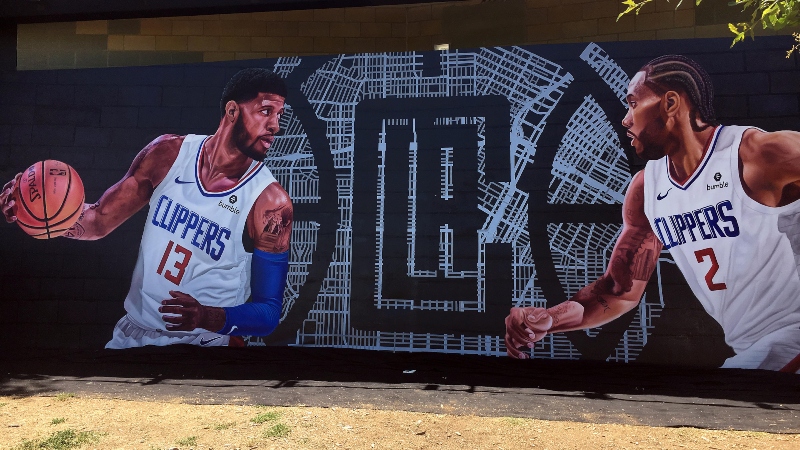
.png)

